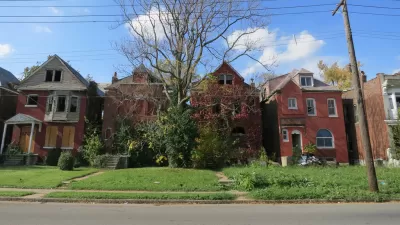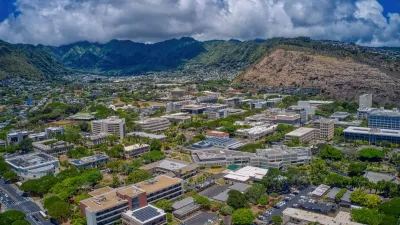As the federal and several state governments continue to allow costs for a college education to rise, local governments and business are looking for strategies to stem the tide.
A highly-educated population is a well-understood pillar of a strong economy. At risk with rising college costs is America's ability to educate those at the post-secondary level. As Noël Harmon and Blair Forlaw, of The Huffington Post report, "[c]ollege price tags have been rising for 30 years, up 570% between 1982 and 2011...That's almost four times the rate of growth in median family income."
The federal and state governments lack of progress in curbing rising costs has energized some regions, who are collaborating with private business to create more local and regionalized efforts at lowering the barriers to a college education. For example, in St. Louis, "area companies, educators, foundations, and government agencies, have set out together to raise post-secondary graduation rates."
Harmon and Forlaw spotlight three strategies St. Louis "has decided they must do if they are to make a significant difference." One is researching data, "to get to know college-goers better." The last two include encouraging innovation and taking advantage of opportunities to collaborate. All three hope to attack the cost of college, from both the standpoint of the student and of the educational institution.
Efforts such as these highlight the growing importance of local government initiatives to addressing such challenges as mobility, sustainability, and economic development.
FULL STORY: Metro Areas Take on College Affordability

Study: Maui’s Plan to Convert Vacation Rentals to Long-Term Housing Could Cause Nearly $1 Billion Economic Loss
The plan would reduce visitor accommodation by 25,% resulting in 1,900 jobs lost.

North Texas Transit Leaders Tout Benefits of TOD for Growing Region
At a summit focused on transit-oriented development, policymakers discussed how North Texas’ expanded light rail system can serve as a tool for economic growth.

Why Should We Subsidize Public Transportation?
Many public transit agencies face financial stress due to rising costs, declining fare revenue, and declining subsidies. Transit advocates must provide a strong business case for increasing public transit funding.

How to Make US Trains Faster
Changes to boarding platforms and a switch to electric trains could improve U.S. passenger rail service without the added cost of high-speed rail.

Columbia’s Revitalized ‘Loop’ Is a Hub for Local Entrepreneurs
A focus on small businesses is helping a commercial corridor in Columbia, Missouri thrive.

Invasive Insect Threatens Minnesota’s Ash Forests
The Emerald Ash Borer is a rapidly spreading invasive pest threatening Minnesota’s ash trees, and homeowners are encouraged to plant diverse replacement species, avoid moving ash firewood, and monitor for signs of infestation.
Urban Design for Planners 1: Software Tools
This six-course series explores essential urban design concepts using open source software and equips planners with the tools they need to participate fully in the urban design process.
Planning for Universal Design
Learn the tools for implementing Universal Design in planning regulations.
City of Santa Clarita
Ascent Environmental
Institute for Housing and Urban Development Studies (IHS)
City of Grandview
Harvard GSD Executive Education
Toledo-Lucas County Plan Commissions
Salt Lake City
NYU Wagner Graduate School of Public Service





























